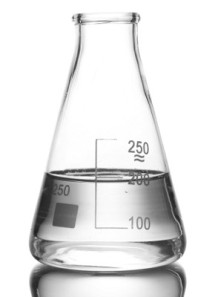Triethylene Glycol (TEG)
Cosmetics
Code: 252948
Completely miscible with water, ethanol and many fragrance oils
Triethylene Glycol (TEG)
Completely miscible with water, ethanol and many fragrance oils
Triethylene Glycol (TEG, CAS 112‑27‑6)
| Property | Key data |
|---|---|
| Chemical structure | HO–CH₂–CH₂–O–CH₂–CH₂–O–CH₂–CH₂–OH |
| Molar mass | 150.17 g mol⁻¹ |
| Appearance | Colourless, virtually odour‑free, viscous liquid |
| Solubility | Completely miscible with water, ethanol and many fragrance oils |
| Viscosity (25 °C) | ~49 cP |
| Boiling point / vapour pressure | 285 °C / < 0.01 mm Hg – very low volatility |
Why formulators use TEG
| Function in the EU CosIng/CosmeticsInfo databases | Typical benefit in practice |
|---|---|
| Viscosity‑decreasing agent Cosmetics Info | Thins surfactant systems or hydro‑alcoholic gels without raising flash‑point the way ethanol does. |
| Fragrance ingredient / solvent / coupler cir-reports.cir-safety.org | Excellent polar solvent for essential‑oil accords; slows evaporation and helps “fix” light top notes. |
| Humectant / plasticiser (shared with other small PEGs) | Adds mild moisturisation and keeps film‑formers (e.g., nail enamel) flexible. |
| Antimicrobial / deodorising adjuvant | Aerosolised TEG is lethal to many airborne microbes and is used in odour‑control sprays and deodorant formulas. Google Patents Glenn Corp |
Formulation & handling notes
| Aspect | Guidance |
|---|---|
| Compatibility | Stable from pH 3‑10; miscible with water, alcohols, glycols, many surfactants. |
| Preservation synergy | 1‑2 % TEG with 0.8‑1 % phenoxyethanol (or with caprylyl glycol) can broaden antimicrobial spectrum. Glenn Corp |
| Processing | Add to the cool‑down or final dilution phase to avoid unnecessary heating (degrades above ≈200 °C). |
| Packaging | Hygroscopic; head‑space desiccant not required but HDPE or PET bottles minimise water uptake. |
| Impurity limits | Ensure MEG + DEG < 0.1 % total and 1,4‑dioxane < 10 ppm to meet global cosmetic GMP expectations. |
Safety & regulatory status
| Jurisdiction / body | Position |
|---|---|
| CIR Expert Panel (US) | “Safe as used” in cosmetics; highest concentration in use: 0.08 % in rinse‑off cleansers. Panel advises not to apply PEGs to damaged skin owing to burn‑patient case reports. cir-reports.cir-safety.org |
| EU Cosmetic Regulation 1223/2009 | Not listed in Annex II (prohibited) or Annex III (restricted). Free to use under the general safety requirement. Note: the dimethyl ether TEGDME is restricted and must not be confused with TEG. EUR-Lex |
| FDA | Permitted indirect food‑contact additive; no specific cosmetic restriction. Cosmetics Info |
| ASEAN / Health Canada | No specific limits; falls under “general use” glycols. |
Usage: Mix in serum, lotion or cream.
Mixing method: Can be mixed in several steps.
Usage rate: 1-20% (do not use more than 50%)
Product characteristics: Clear liquid, similar to oil.
Solubility: Soluble in water.
Storage: Can be stored at room temperature, but close the bottle tightly and keep away from sunlight or heat. The product has a shelf life of at least 2 years.
INCI Name : Triethylene Glycol
| Mechanism | - |
| Appearance | - |
| Longevity | - |
| Strength | - |
| Storage | - |
| Shelf Life | - |
| Allergen(s) | - |
| Dosage (Range) | - |
| Recommended Dosage | - |
| Dosage (Per Day) | - |
| Recommended Dosage (Per Day) | - |
| Mix Method | - |
| Heat Resistance | - |
| Stable in pH range | - |
| Solubility | - |
| Product Types | - |
| INCI | - |
Purchase History for
Loading purchase history...
Cart
No products
Subtotal:
฿0.00
Total
฿0.00
THB



